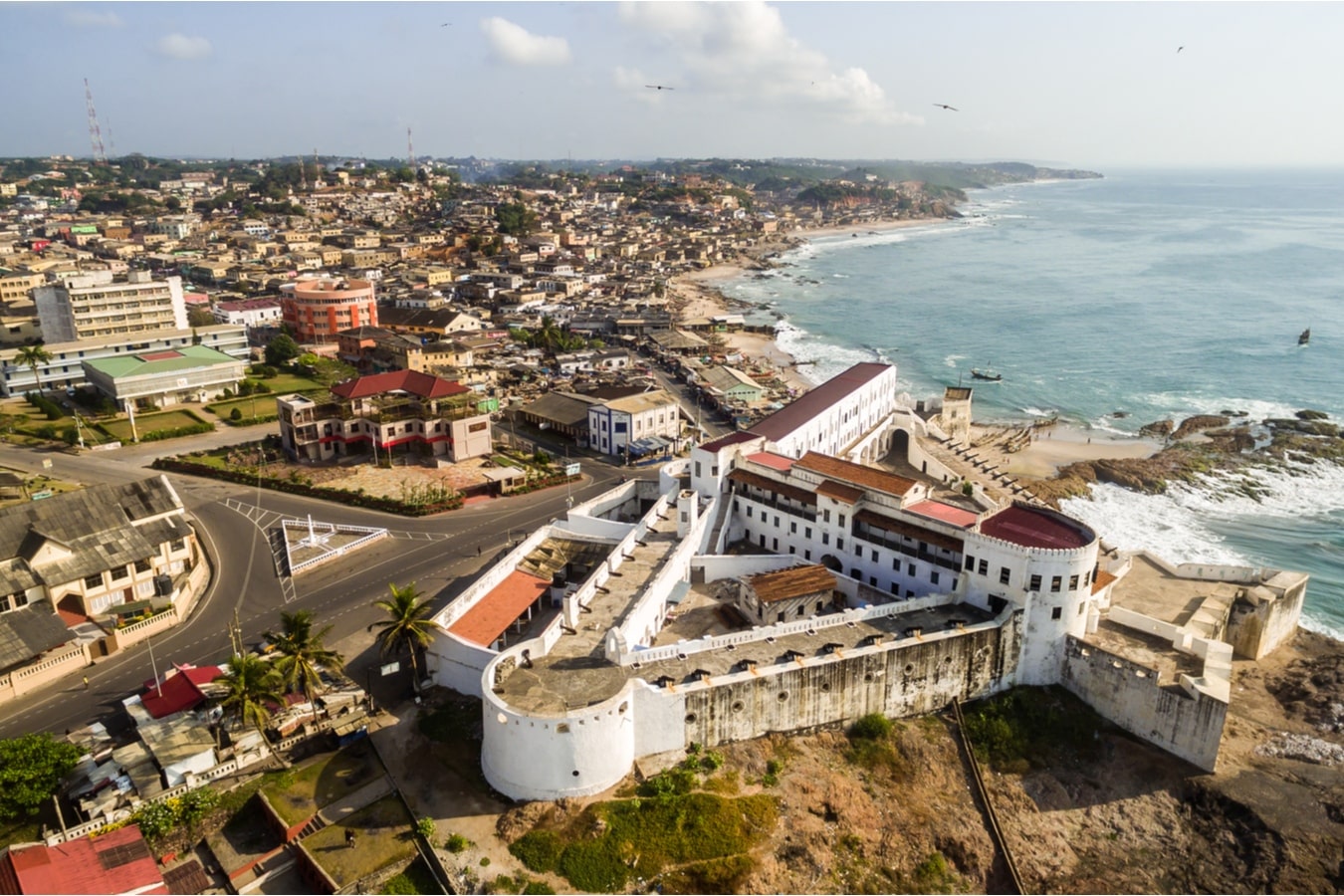List of Historical Sites in Ghana and what to expect there

Ghana, a country with a rich tapestry of history and culture, offers a unique journey into the past through its well-preserved historical sites.
These sites are more than just tourist attractions; they are living memoirs of the country’s captivating narrative.
By the end of this article, you’ll have a glimpse into Ghana’s historical jewels and what awaits you on a visit.
Cape Coast Castle
Description and Historical Significance
The Cape Coast Castle, once a focal point of the trans-Atlantic slave trade, narrates a somber chapter of human history. Built by the Europeans in the 17th century, the castle witnessed the harrowing journey of enslaved Africans crossing the Atlantic.
What to Expect When Visiting
A visit here is a poignant experience. The guided tours shed light on the life of the enslaved, and the “Door of No Return” symbolizes the final exit point of the slaves from Africa. The contrasting serene views of the Atlantic Ocean add to the reflective atmosphere.
Elmina Castle
Description and Historical Significance
Not far from Cape Coast is the Elmina Castle, the oldest European building in Sub-Saharan Africa, established by the Portuguese in 1482. Its historical narrative is intertwined with the slave trade, providing a stark look into the past.
What to Expect When Visiting
A guided tour here unveils the harsh conditions faced by slaves. The picturesque views of the neighboring fishing village from the castle offer a contrasting peaceful backdrop to its dark past.
Kwame Nkrumah Mausoleum
Description and Historical Significance
- Advertisement -
Located in Accra, the Kwame Nkrumah Mausoleum is a homage to Ghana’s first president and a visionary of African unity. The Mausoleum encapsulates his enduring legacy in the fight for independence.
What to Expect When Visiting
The museum within the Mausoleum houses personal belongings of Nkrumah, painting a vivid picture of his life and times. It’s a place of learning and reflection on the journey towards independence.
Ashanti Kingdom Palace
Description and Historical Significance
In Kumasi lies the Ashanti Kingdom Palace, a testament to the rich cultural heritage of the Ashanti Kingdom. The palace holds royal artifacts, narrating tales of a traditional governance system pre-dating colonial rule.
What to Expect When Visiting
Visitors can expect to see royal regalia, historical artifacts, and learn about the Ashanti’s ancestral lineage, providing a deeper understanding of Ghana’s traditional past.
Larabanga Mosque
Description and Historical Significance
The Larabanga Mosque, often referred to as the ‘Mecca of West Africa’, stands as a marvel of Sudanese architectural style. Built in the 13th century, it’s one of the oldest mosques in the country and a spiritual emblem.
What to Expect When Visiting
A visit here provides a serene spiritual experience amidst an ancient structure that has withstood the test of time, offering a peaceful retreat and a touch of history.
Wrapping Up
The historical sites in Ghana offer a fascinating glimpse into the country’s past, each with its unique story. As you plan your visit, remember, each site is a chapter in the larger narrative of Ghana’s historical and cultural saga.
We encourage you to delve deeper, ask questions, and share your experiences as you explore these historical treasures. Your adventure through Ghana’s history is not just a personal journey, but a shared exploration that contributes to a broader understanding and appreciation of this beautiful country.


